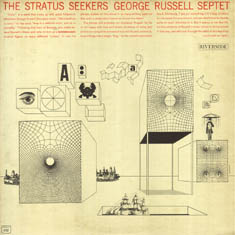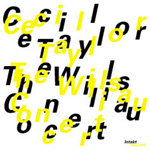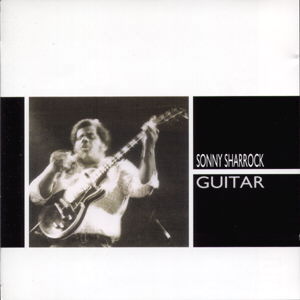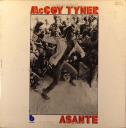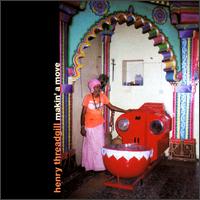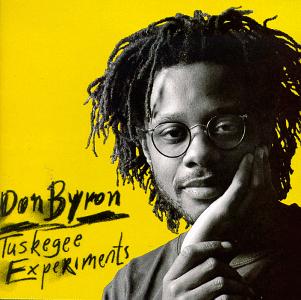
Anthony Braxton

"In my opinion, I believe my work, for whatever reason, ... I am viewed as the Negro who has gone outside of the categories assigned to me. My work was not idio-centric, in a way, where I could be of value to the forces, which are rebuilding components in this time period. This is true for the African-American antebellum traditionalist's sentiments who have always mistrusted me and I can respect that. But at the same time, we're talking now about an effort that is thirty-five to forty years and the isolation that I have experienced is not unique when I think of the great work of Leroy Jenkins, the great work of Henry Threadgill, the great work of Connie Crothers. So, no, the jazz people couldn't use a guy like me because my work doesn't come separate from defined components, including defined documentation about the systemic components of my experience and finally, the transient implications of my system. It is not the kind of thing that the jazz structure is prepared to deal with. If I would say, 'Swing baby, swing and burn it up,' then there would be room for a guy like me."
- Anthony Braxton, from an interview at All About Jazz.
Black History Month at HurdAudio is wrapping up today. Here is a rundown of the discreet listening experiences I have celebrated and focused on this month:
Pharoah Sanders: Message From Home
Roscoe Mitchell: Four Compositions
Albert Ayler: Holy Ghost (disc 5)
Thelonius Monk: Solo Monk
Muhal Richard Abrams: Think All, Focus One
Don Pullen: Tomorrow's Promises
George Lewis: The Shadowgraph Series
Eric Dolphy: Iron Man
Max Roach/Anthony Braxton: Birth and Rebirth
Lawrence D. "Butch" Morris: Conduction #11
Ornette Coleman:Sound Museum - Three Women
John Coltrane/Don Cherry: The Avant-Garde
Ron Miles: Woman's Day
Don Byron: Tuskegee Experiments
Henry Threadgill: Makin' A Move
Sun Ra: Sound Sun Pleasure!!
McCoy Tyner: Asante
Sonny Sharrock: Guitar
Joseph Jarman: Lifetime Visions for the Magnificent Humans
Wayne Shorter: The All Seeing Eye
Cecil Taylor:The Willisau Concert
George Russell: The Stratus Seekers
Matthew Shipp: Pastoral Composure
Charles Mingus: Blues & Roots
These make up a sampling of music from my personal collection. This is hardly complete or fully representative of the full range of contributions made to music history by black artists. It is a start and I hope to apply this kind of focused listening every year. This year I am pleasantly surprised by the range and intensity of spiritual expression that runs much deeper than I had previously suspected. From the congregational revivalist meetings of Charles Mingus, the quiet Buddhist inspired optimism of Joseph Jarman, the devout Islamic faith of McCoy Tyner, the meditations on creation by Wayne Shorter to the personal spiritual quest of Albert Ayler I am awed by the profundity of the expressions and idealism rendered in sound.
Included in this sampling are two MacArthur "Genius" Award recipients who have tirelessly advanced and advocated the art of improvisation. "Jazz" is larger than a single stylistic interpretation. Anthony Braxton and George Lewis have drawn criticism for the intellectual depth of their music and writings. A criticism that is, in my opinion, derived from a narrow-minded and racist anti-intellectualism applied with grim ferocity to African-American artists. The long-term health and vibrancy of jazz as a living art form can only be enhanced by realizing the full value of the ideas and music put forward by these visionary "geniuses."
As a graduate student working on a paper on improvisation theory I read Braxton's three volume Tri-Axiom writings and made a pilgrimage to Wesleyan University to meet with the author of this incredibly wide-ranging account of the theoretic foundations of his musical vision. Braxton has attempted, and succeeded, at incorporating nearly every dimension of existence into his art. As such, he has had to construct his own vocabulary just to discuss it. Which has unfortunately become a barrier to casual understanding of his ideas. But it is a barrier only because there is no adequate vocabulary for approaching what he has to say and a deep understanding is well worth the effort of developing a fluency in his discourse.
Professor Braxton left me in his office while he took care of some business. His bookshelves were packed from floor to ceiling with original scores. There were scores in stacks on the desk and floor. I studied a few that were handy and took a glimpse at the genius that has yet to be fully performed, recorded and understood despite a consistent and prolific flow of recordings. The man has written operas, orchestral works and multi-media performance pieces that have yet to receive a proper staging.
After reviewing a preliminary draft of my paper Anthony Braxton let me know he was pleased that I had picked up on the modular quality of his music. I don't understand why more writing about him doesn't focus on this aspect of his output. Each composition is a small part of a larger, meta-work that can be assembled or collaged from any combination of his compositions. This is an allusion to the completeness of the underlying and unifying principles of his craft that take socio-political, historical, scientific, emotional, rational, etc. factors into account. And it works. This music is fantastic.
The essay, "Teaching Improvised Music: An Ethnographic Memoir" by George Lewis is an incredible contribution to the pedagogical advancement of improvisation. Along with a body of significant recorded works and performances Lewis is a major figure in progressive jazz theory and practice. The Shadowgraph pieces I reviewed this month deserve all the fetishism and exposure one finds with the Beethoven symphonies.
Like Braxton, Lewis cultivates a multi-dimensional approach to his art and also holds an academic position. After teaching for many years at UCSD Lewis now educates at Columbia. His music spans solo trombone music (the instrument that he is a virtuoso on), electronic works, large ensembles and multiple free improvisations with other master performers. Works like "North Star Boogaloo" directly address issues of race with passion and authority. And like Braxton, the full impact of George Lewis's music and ideas have yet to be fully assessed and appreciated.
I made my own personal pilgrimage to Vancouver, British Columbia in the summer of 2003 to hear a new George Lewis work performed by the NOW Orchestra. Prior to the concert I was scanning the CD table, looking for The Shadowgraph Series as it was proving to be difficult to locate back in the states. I was shocked to find no George Lewis for sale whatsoever and inquired about this. The response was a tongue-in-cheek sour grapes of "oh, well, after getting that genius award he doesn't need to sell his music anymore." George Lewis himself proved to be more personable in concert. Charismatically introducing a major new work and giving each soloist their respect and due one catches a glimpse of the leadership he exudes as a prominent figure in a history of jazz that is still being written.
This Black History Month I am mindful of the ongoing contributions and intellectual rigor that these two figures bring to a music that continues to evolve with a past and present that owes a great deal to the contributions of African-American artists.






